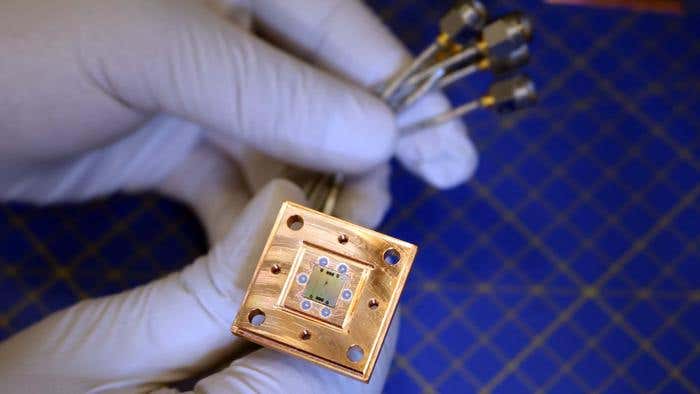Spinal chord implant enables patient to get up and walk again
A patient suffering from a debilitating neurodegenerative disease was able to get up and walk again after being bedridden for over a year.

[Apr 8, 2022: Emmanuel Barraud, Ecole Polytechnique Fédérale de Lausanne]
Patient with multiple system atrophy-parkinsonian type (MSA-P) was able to stand and walk after one year of being bedridden. (CREDIT: EPFL / Jimmy Ravier)
A patient suffering from a debilitating neurodegenerative disease was able to get up and walk again after being bedridden for over a year, thanks to an innovative system developed by a team of scientists at the NeuroRestore research center headed by Jocelyne Bloch, a neurosurgeon at Lausanne University Hospital (CHUV) and Professor at University of Lausanne UNIL, and Grégoire Courtine, an EPFL professor in neuroscience.
Their system includes electronics implanted directly on the spinal cord to reactivate the neurons that regulate blood pressure, thereby preventing the patient from losing consciousness every time she’s in an upright position.
The implant had already been used to treat low blood pressure in tetraplegic patients, but this was the first time it was applied to this kind of neurodegenerative disease, substantially improving the patient’s quality of life.
The study, titled "Implanted System for Orthostatic Hypotension in Multiple System Atrophy", was published in The New England Journal of Medicine. The patient in the study suffers from multiple system atrophy-parkinsonian type (MSA-P), a neurodegenerative disease that afflicts several parts of the nervous system, including the sympathetic nervous system. After being bedridden for 18 months, the patient can now walk up to 250 meters.
Related Stories
MSA-P leads to the loss of sympathetic neurons that regulate blood pressure, which tends therefore to drop dramatically as soon as patients are in an upright position – a problem known as orthostatic hypotension – in some cases causing them to faint. This makes them more likely to fall, limits their ability to stand and walk around, and can eventually shorten life expectancy. Patients’ quality of life is reduced considerably since they must remain in a reclined position to avoid passing out.
The scientists’ implant consists of electrodes connected to an electrical-impulse generator that’s commonly used to treat chronic pain. After implanting their device directly on the patient’s spinal cord, the scientists found an improvement in the body’s capacity to regulate blood pressure, enabling the patient to remain conscious for longer periods in an upright position and to begin physical therapy to walk again.
Image to the right: Soft electronic implant designed to fit the dura mater.
(CREDIT: Neurorestore / Jimmy Ravier)
For Jocelyne Bloch, this advance paves the way to important clinical breakthroughs in treating degenerative diseases: "We’ve already seen how this type of therapy can be applied to patients with a spinal-cord injury. But now, we can explore applications in treating deficiencies resulting from neurodegeneration.
This is the first time we’ve been able to improve blood-pressure regulation in people suffering from MSA." Grégoire Courtine adds: "This technology was initially intended for pain relief, not for this kind of application. Going forward, we and our company Onward Medical plan to develop a system targeted specifically to orthostatic hypotension that can help people around the world struggling with this disorder."
Note: Materials provided above by Ecole Polytechnique Fédérale de Lausanne. Content may be edited for style and length.
Like these kind of feel good stories? Get the Brighter Side of News' newsletter.
Tags: #New_Innovations, #Spinal_Cord, #Implant, #Treatment, #Research, #Medical_News, #Paralysis, #Walking, #The_Brighter_Side_of_News
Joseph Shavit
Head Science News Writer | Communicating Innovation & Discovery
Based in Los Angeles, Joseph Shavit is an accomplished science journalist, head science news writer and co-founder at The Brighter Side of News, where he translates cutting-edge discoveries into compelling stories for a broad audience. With a strong background spanning science, business, product management, media leadership, and entrepreneurship, Joseph brings a unique perspective to science communication. His expertise allows him to uncover the intersection of technological advancements and market potential, shedding light on how groundbreaking research evolves into transformative products and industries.



